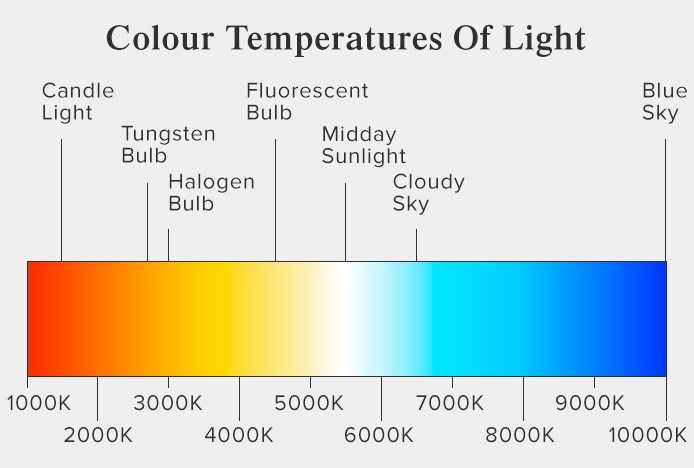What's CCT in Lamp
CCT stands for Correlated Colour Temperature (which is often shortened to just Colour Temperature, short as CT). It defines the colour, not brightness of a light source and is measured in kelvin (K) . It is to heat a standard black body (such as platinum), and when the temperature rises to a certain level, the colour begins to gradually change from black to red. It turns yellow, turns white, and finally emits blue light, which gradually changes. Using the characteristics of this light color change, when the light color of the light source is the same as that of the black body, we call the temperature of the black body at that time the color temperature of the light source.
Color temperature defines the color appearance of a white LED. CCT is defined in degrees K; warm light is about 2700K, about 4000K becomes a neutral white, and 5000K or higher becomes a cool white. as temperature increases in Kelvins, color changes to more of a “paper white” known as natural or neutral white (between 3500K and 5100K) and finally into a bluish-white known as cool white (5100K-20000K). Note that CCT doesn't tell you anything about the color rendering capabilities of LEDs.

To better understand what colour temperature is and how to measure it, here's a (hopefully brief!) scientific definition.Colour temperature is linked with the spectrum and chromaticity of a light source. Each light source has its own spectrum i.e. the amount of light emitted by the light source at each wavelength. Light sources with a low colour temperature have a spectrum with prevalent high wavelengths (closer to the infrared area), giving light a reddish appearance – like candlelight. That’s the ideal colour temperature for our homes or the aforementioned restaurant, to create a relaxed and cosy atmosphere. Light sources with a high colour temperature have a spectrum with prevalent low wavelengths (closer to the UV area), emitting a more bluish and cold light – like daylight. That’s the right lighting for offices, gyms or schools – all spaces where we need more dynamicity and focus
When the color temperature is around 3000K, the light color is yellowish. When the color temperature is above 5000K, the light color is bluish. Light of different color temperature, with different lighting and visual effects. Different color temperatures correspond to different colors of light

In simple terms, warm white light(2000K-3500K) suit for creating a cozy and relaxed lighting atmosphere. Just think about the restaurant you’d like to take your date to – the one with the most romantic atmosphere you know. That feeling of warmth, comfort and cosiness you love has to do with colour temperature. Or that feeling of concentration and energy when you’re standing in a bright office, maybe with daylighting too? That has to do with colour temperature as well.
The following chart is approximate refecting the light source with corresponding Kelvin(K)
Light sources CT (Kelvin. K)
Flame of match stick 1700
Candle flame, sunset/sunrise 1800
Incandescent light bulb 2700–3300
Studio lamps, photofloods, etc. 3200
Carbon-arc, acetylene oxygen flame 3700
Moonlight, xenon arc lamp 4100
Horizon daylight 5000
Vertical daylight, electronic flash 5500–6000
Overcast daylight 6500
LCD or CRT screen 6500–9300
Fluorescent lamps Correlated CT (K)
Residential lighting (warm-white fluorescents) 2700
Neutral-white fluorescents 3000–3500
Cool-white fluorescents 4100
Daylight fluorescents 5000–6500
Departmental store lamp (TL83–TL85)/ultralume 30–503000–5000
Note: Tentative temperatures are listed– actual temperatures may vary widely
Contact:
Phone: +86-13510672827
E-mail: contact@vtecklite.com
Add: 6FL, Chuangcheng Mansion,Taiwan Industrial Estate,Shiyan Shenzhen China